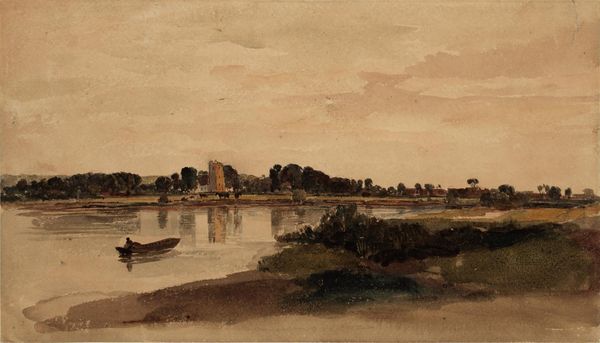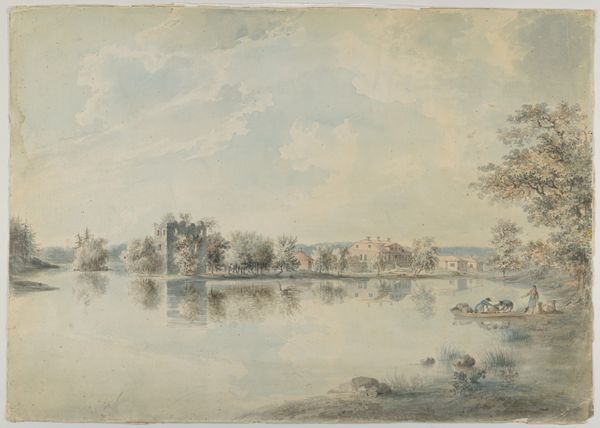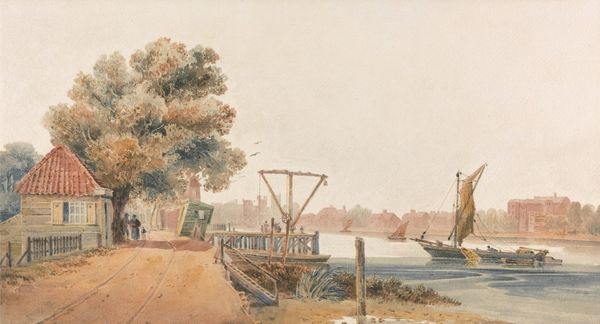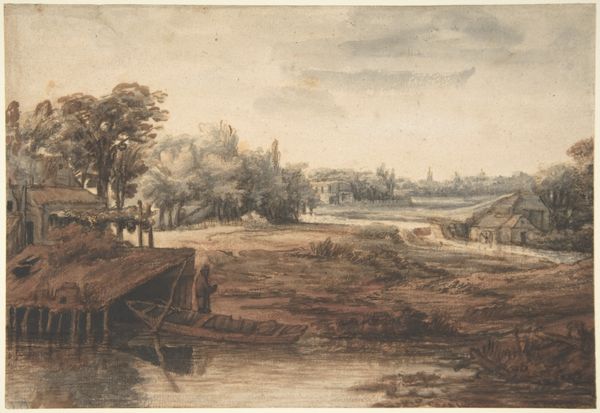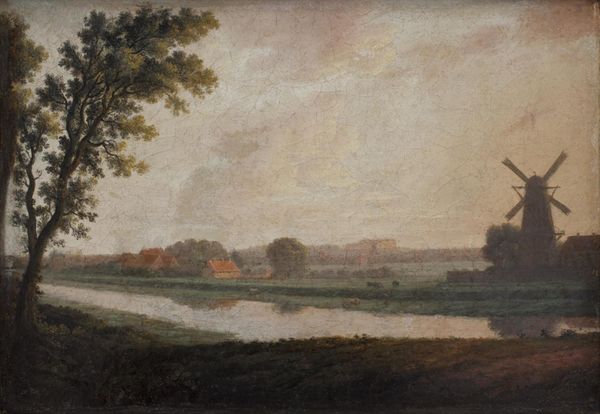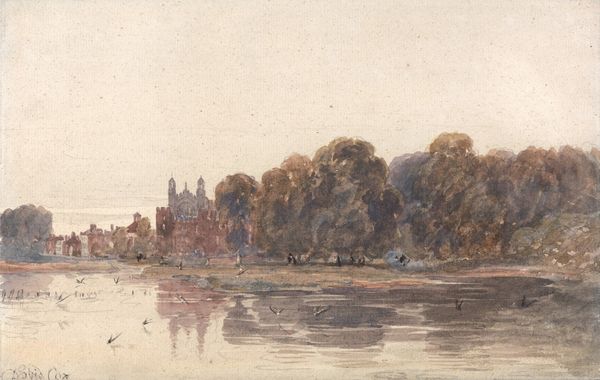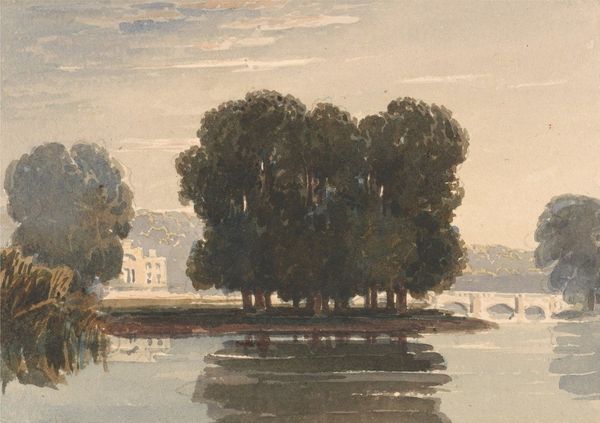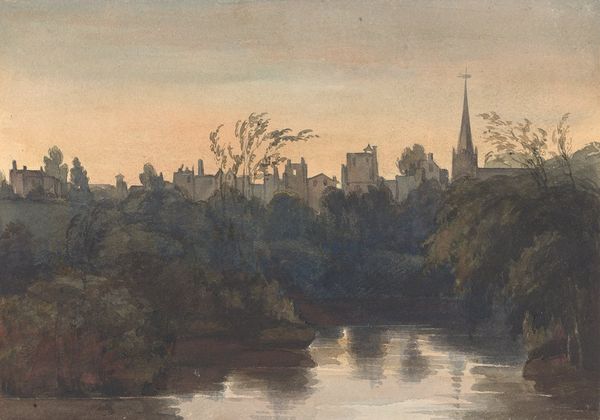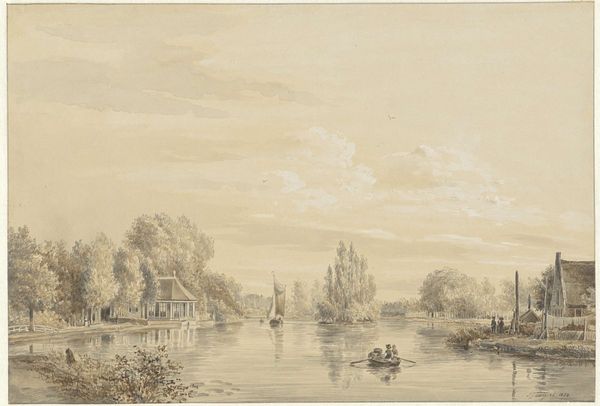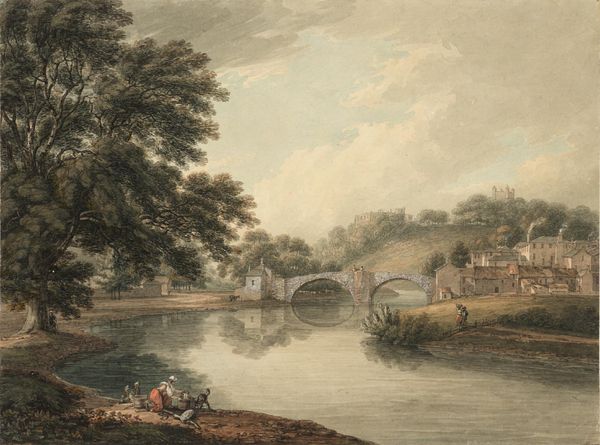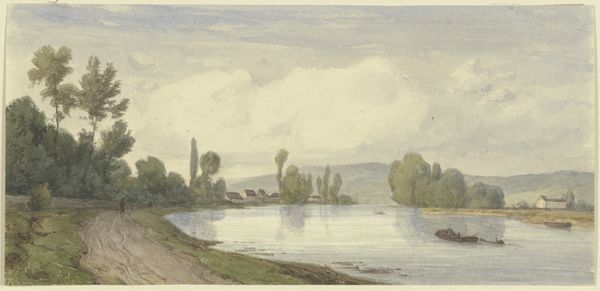
Dimensions: support: 371 x 648 mm
Copyright: CC-BY-NC-ND 4.0 DEED, Photo: Tate
Curator: Peter De Wint's "Bray on Thames from the Towing Path," held at the Tate, captures a tranquil scene, likely dating from the early 19th century. What strikes you most about it? Editor: That boat, chugging along, it’s almost comical! It gives me a sense of lazy summer afternoons and simple pleasures, even with all that industry. Curator: Absolutely! The visible paddle wheel and towing path point to the Thames as a crucial artery for commerce and transport, influencing the lives and livelihoods of riverside communities. Editor: Right, it's the blurring of labor and leisure. And look at the paint; the watercolor seems to melt into the paper, echoing the reflections on the water. The materiality softens the industrial aspect, transforming it into something dreamlike. Curator: Precisely. De Wint's skillful handling of watercolor, and his interest in the everyday labor on the Thames offers a lens into the social fabric of his time. Editor: It's a reminder that art can find beauty and meaning even in the most functional aspects of life. Curator: Indeed, prompting us to consider the value we place on labor, leisure, and the landscapes that connect them. Editor: Definitely food for thought, or maybe just inspiration for a lazy afternoon by the river.
